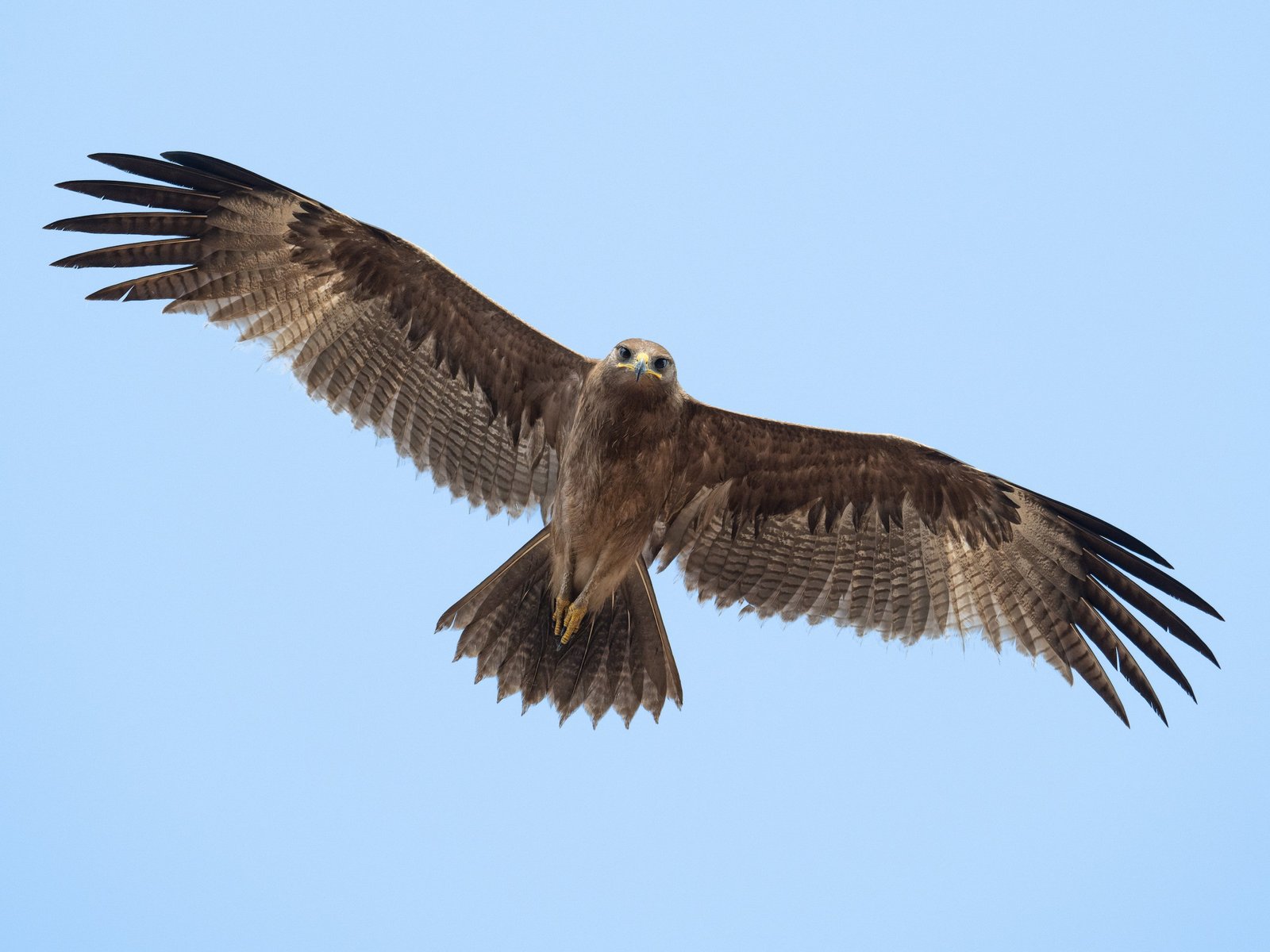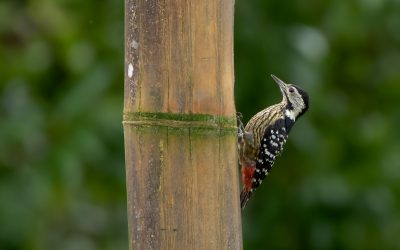By Ronith Urs, Ashwin Viswanathan, and Nirav Bhatt
Identifying raptors can be tricky. At a glance, the large, dark eagles of the subfamily Aquilinae appear to be strikingly similar and are especially difficult to identify – this problem is compounded by the fact that they are most often encountered soaring high up in the sky with nothing but a dark silhouette to aid struggling birders!
A majority of the dark, bulky eagles we encounter in India can be divided into two genera: the Clanga eagles (Greater and Indian Spotted Eagle), and the Aquila Eagles (Tawny, Steppe and Imperial Eagle). This article aims to make the process of identifying Aquila and Clanga eagles easier and a little more intuitive for birders embarking on the wonderful journey of raptor identification.
We start with an illustration of the parts of a raptor wing used in identification (Fig. 1). Please read carefully because these terms will be used extensively further on in the article! The ten outermost flight feathers are termed primaries. The primaries are numbered from the first inner primary P1 to the last terminal primary P10, and the flight feathers interior to P1 are termed secondaries. In Aquila and Clanga eagles, the last 6-7 outer primaries are elongated to form ‘fingers’ that emerge from the wing panel.
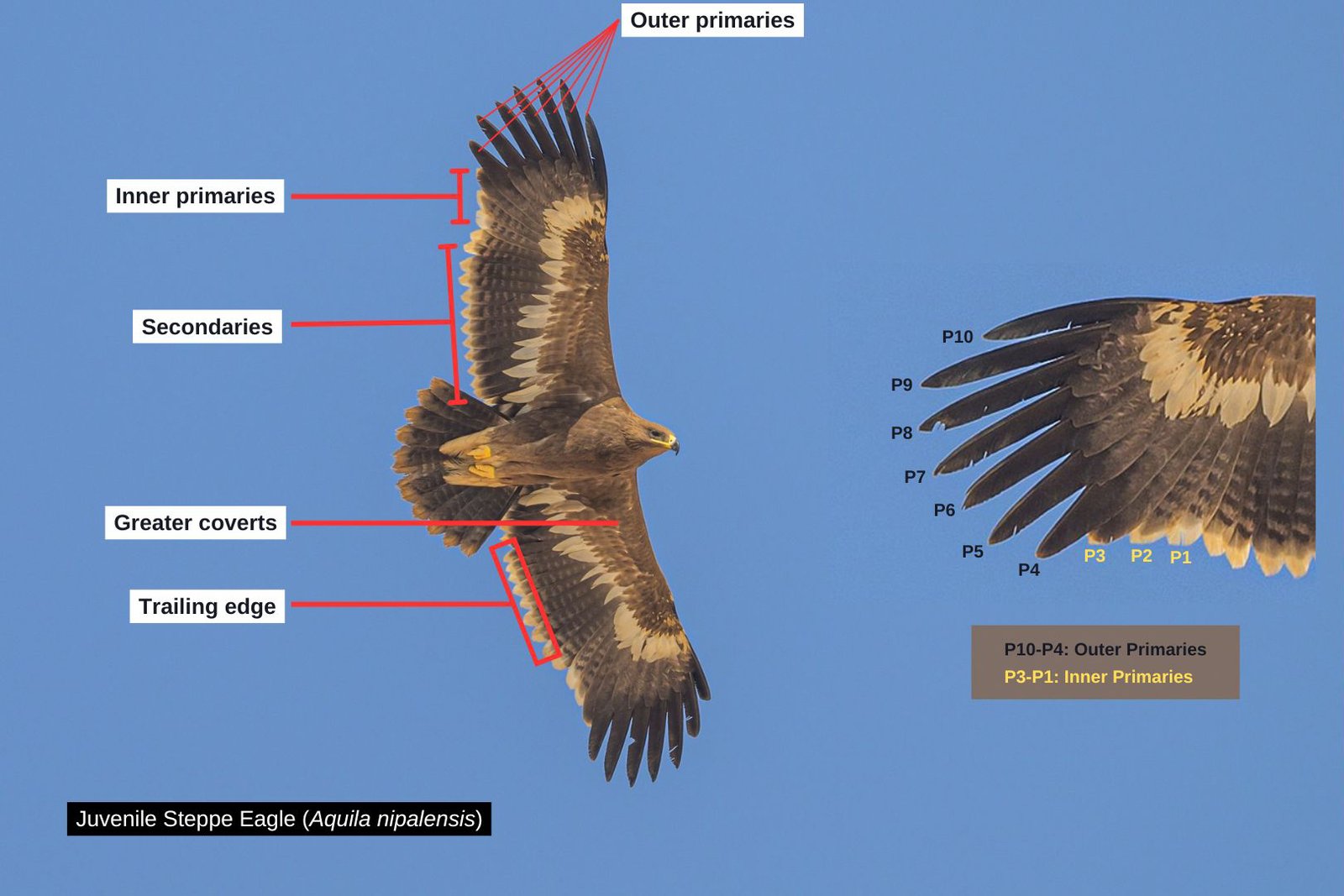
Fig. 1: This diagram illustrates some of the terms used to identify parts of a raptor wing. Photo by Sylvain Reyt.
Clanga vs. Aquila eagles
Spotted eagles of the genus Clanga can be separated from dark Aquila eagles in the region by the ratio between the lengths of their tail and feet (Fig. 2). In flight, both Greater and Indian Spotted Eagles appear to have longer feet extending beyond the halfway point from the base of the tail, a characteristic not seen in dark Aquilas in the region. They are also characterised by circular nostrils (Fig. 3), weaker bills, shorter necks and typically smaller size. When perched, Clanga eagles have sparsely feathered tarsi (Fig. 4), giving the feet an overall less heavy appearance.

Fig. 2: Clanga vs. Aquila feet to tail ratios. Photos by Rakesh Das and Rahul Singh.
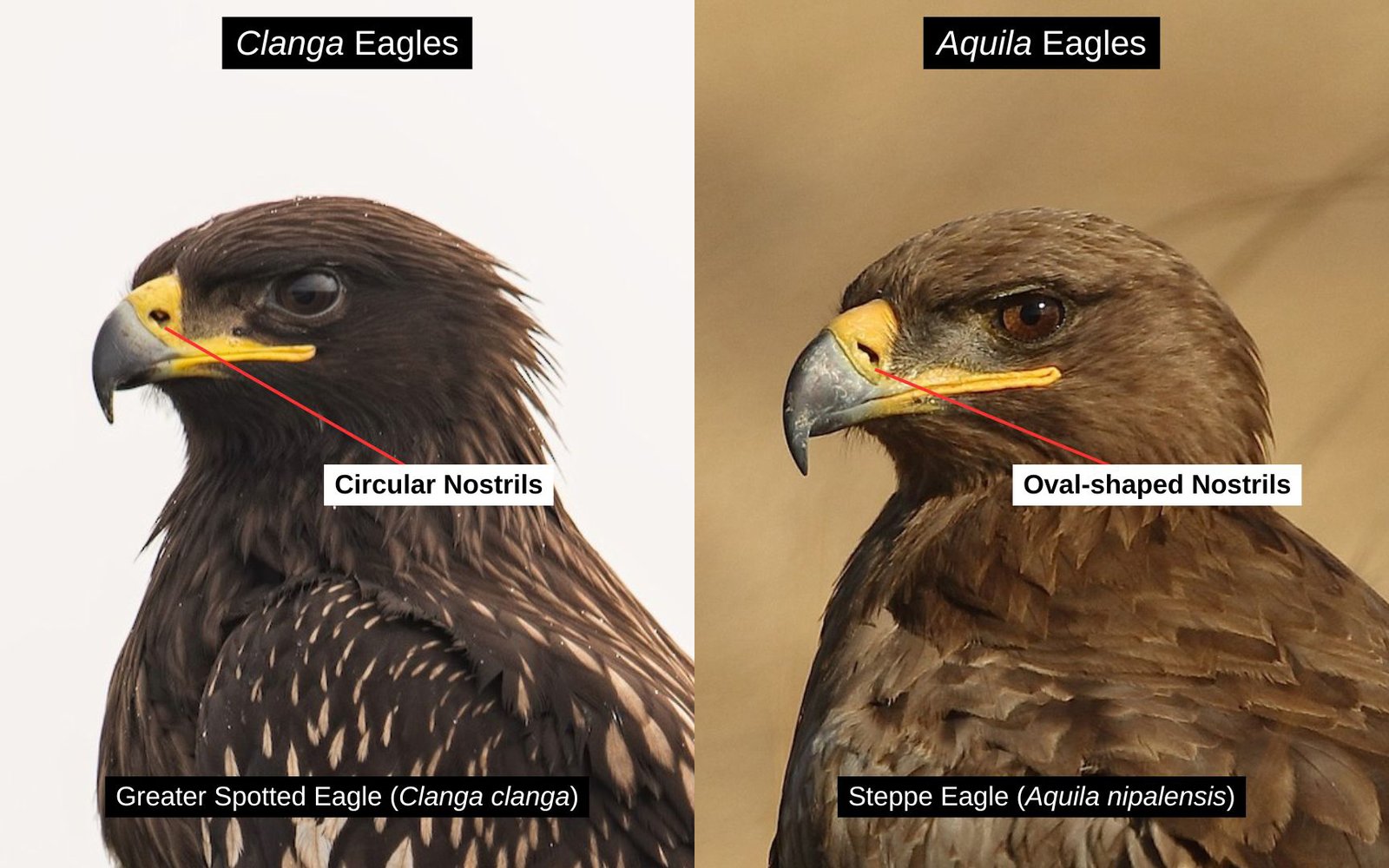
Fig. 3: Clanga vs. Aquila nostril shape. Photos by Wai Loon Wong and Savio Fonseca.
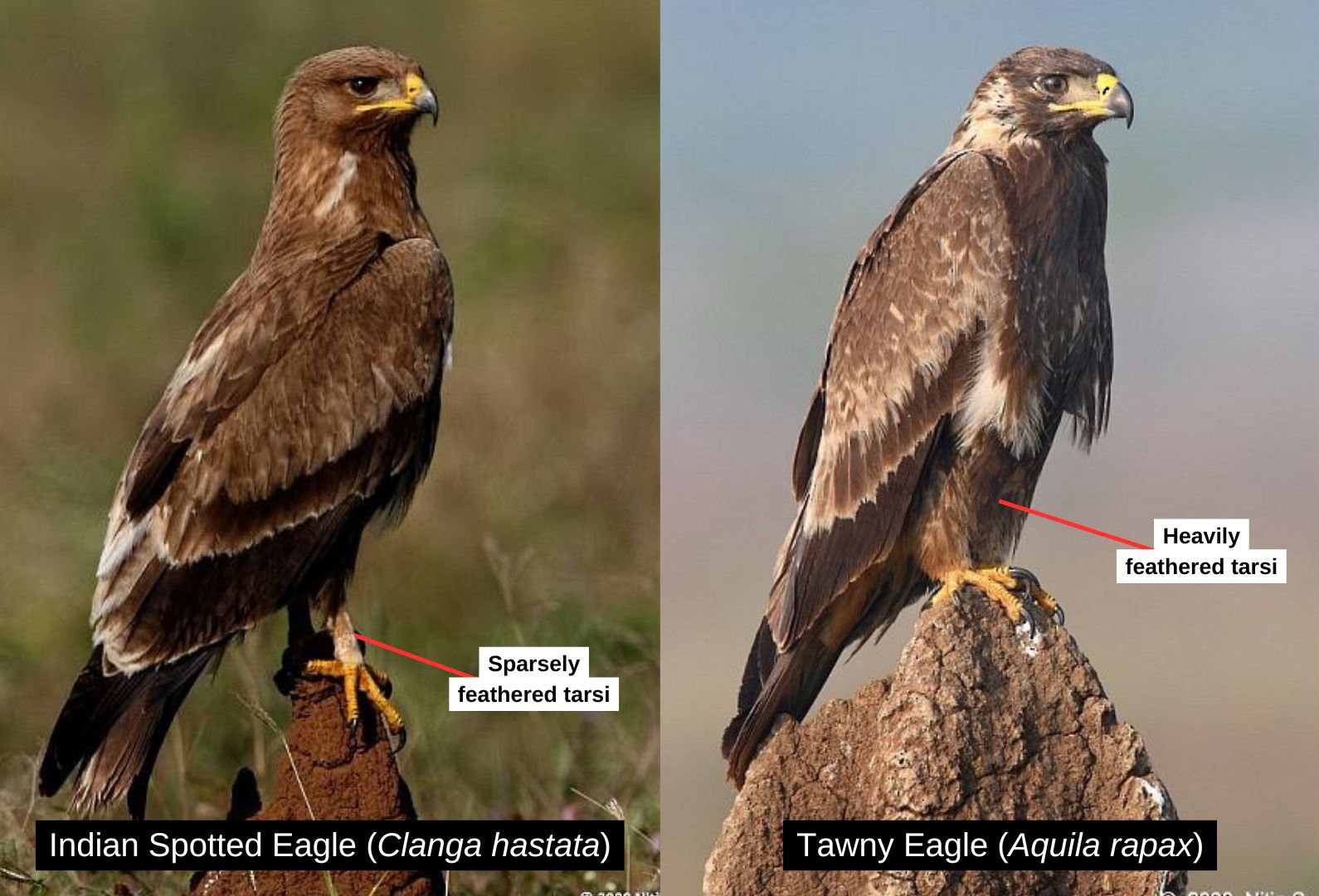
Fig. 4: Clanga vs. Aquila tarsi feathering. Both photos by Nitin Srinivasa Murthy.
Separating Clanga eagles – Greater vs. Indian Spotted Eagle
Greater Spotted Eagles are strictly winter visitors to the Indian peninsula and are partial to wetland habitats. Indian Spotted Eagles are sparse residents and migrants across large parts of the Indian peninsula, inhabiting dry, open forests, scrub, savanna, and grassland habitats. Both are highly variable in plumage with Greater Spotted Eagle also showing a fulvescens morph.
Greater Spotted Eagles can be distinguished from Indian Spotted Eagles by their weakly barred or unbarred flight feathers (Fig. 5), shorter gape that extends only to the middle of the eye (Fig. 6) (though this is often difficult to judge), seven emergent primaries with a longer P4 (Fig. 5) (typically six in Indian Spotted Eagles, with a reduced P4), broader wings, and larger size. Juvenile Greater Spotted Eagles are immediately recognizable by the large whitish patches on the scapulars, a feature absent in juvenile Indian Spotted Eagles. Indian Spotted Eagles however can appear mottled with smaller spots on the upperwing, breast, crown, and nape.
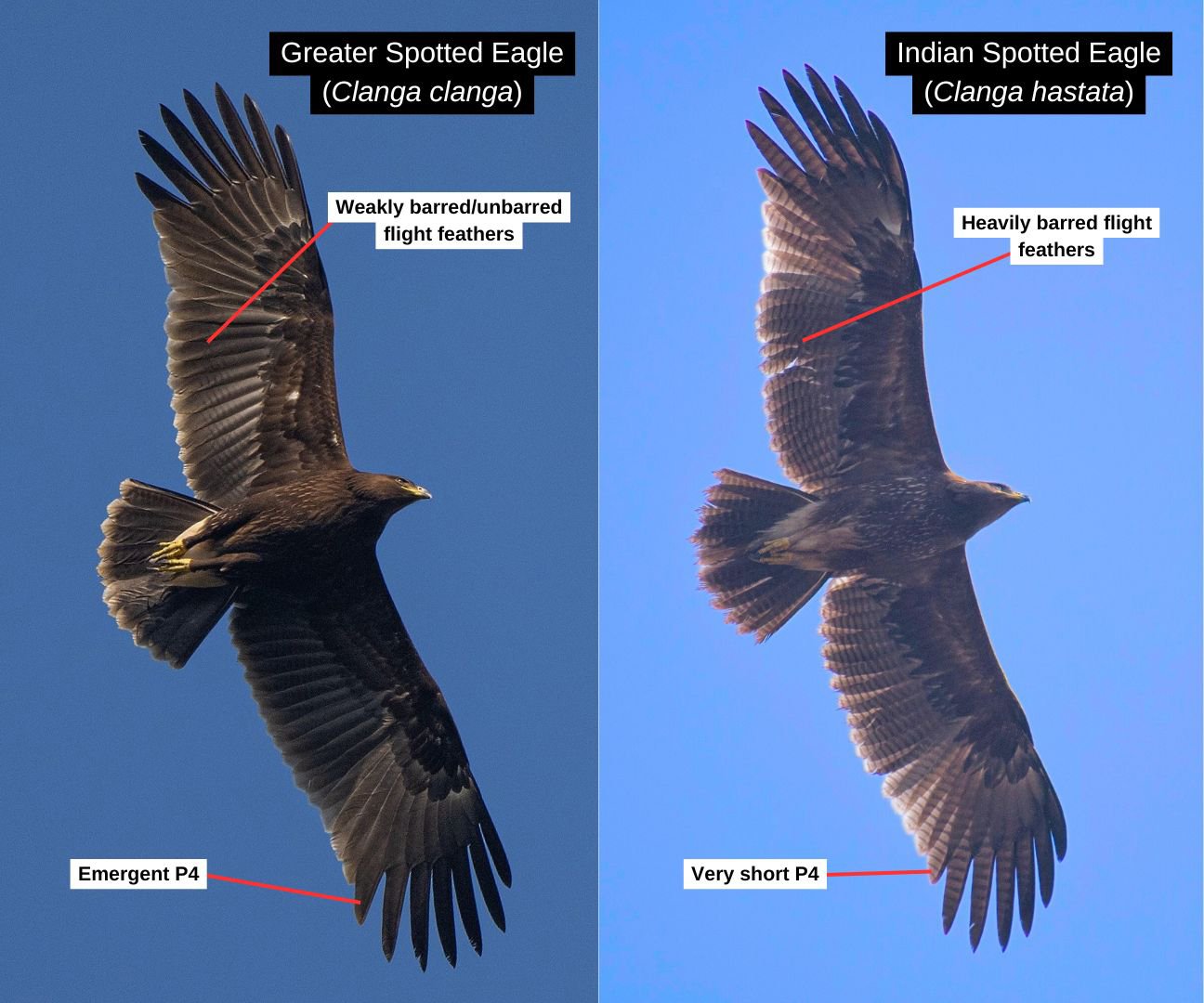
Fig. 5: Greater vs. Indian Spotted Eagle barring. Photos by Rakesh Das and Hardik Dayal.
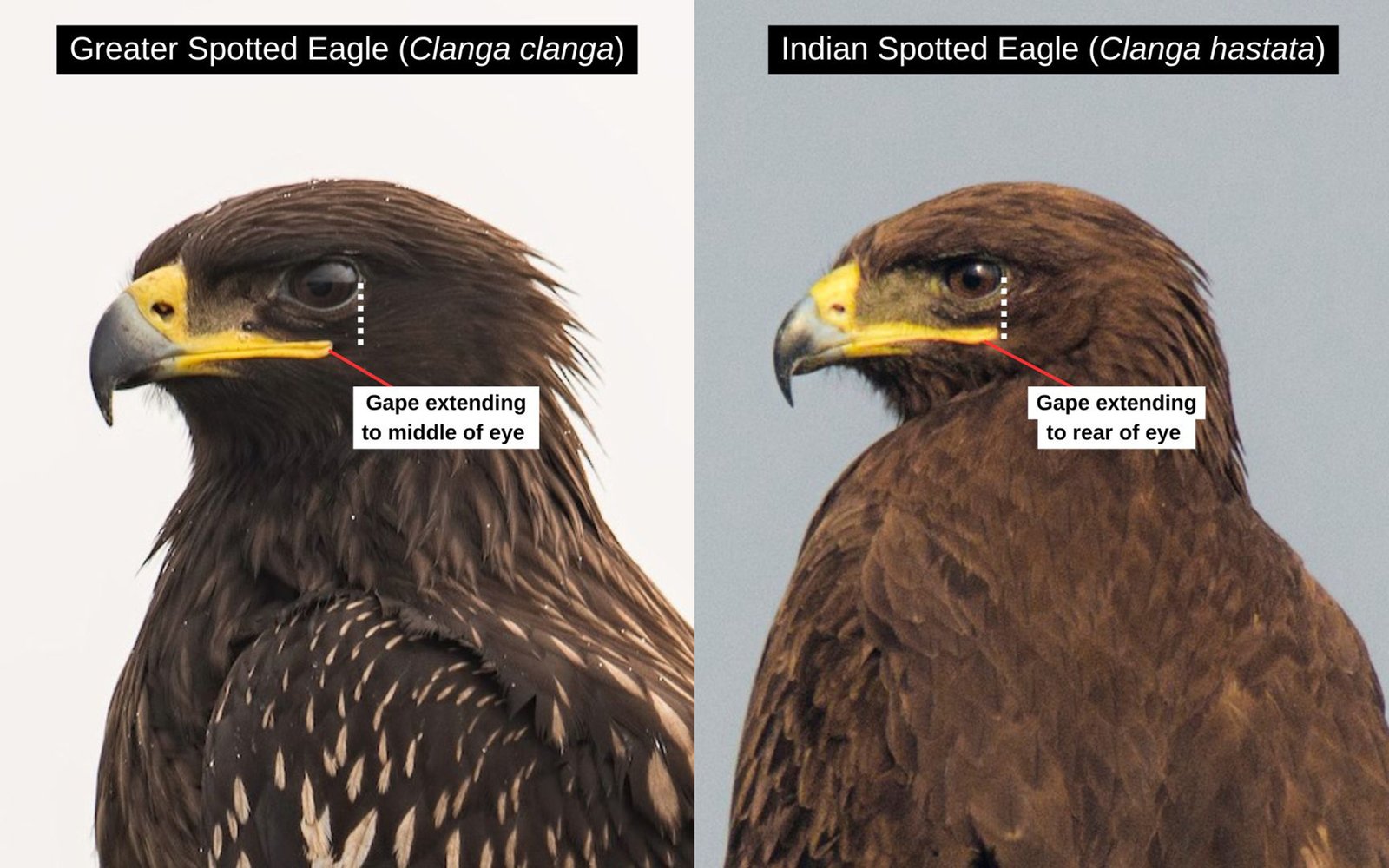
Fig. 6: Greater vs. Indian Spotted Eagle gape length (not reliable in isolation). Photos by Wai Loon Wong and Sunil Kumar.
Separating Aquila eagles – Tawny vs. Steppe vs. Imperial Eagle
Tawny Eagles are largely resident across most of the Indian plains, inhabiting open woodland, savanna, and semi-arid habitats.They do show some migratory tendencies, but Steppe Eagles and Imperial Eagles are strictly migratory to the Indian subcontinent with larger numbers wintering in the north.
Tawny Eagles can be distinguished from Steppe Eagles by their shorter gape lines (Fig. 7) and overall weaker build in adults, as well as the absence of a whitish border to the greater coverts in juveniles. Adult Tawny Eagles may show a weak trailing edge to the secondaries, but it is not as well-defined as that seen in adult Steppe Eagles (Fig. 8).
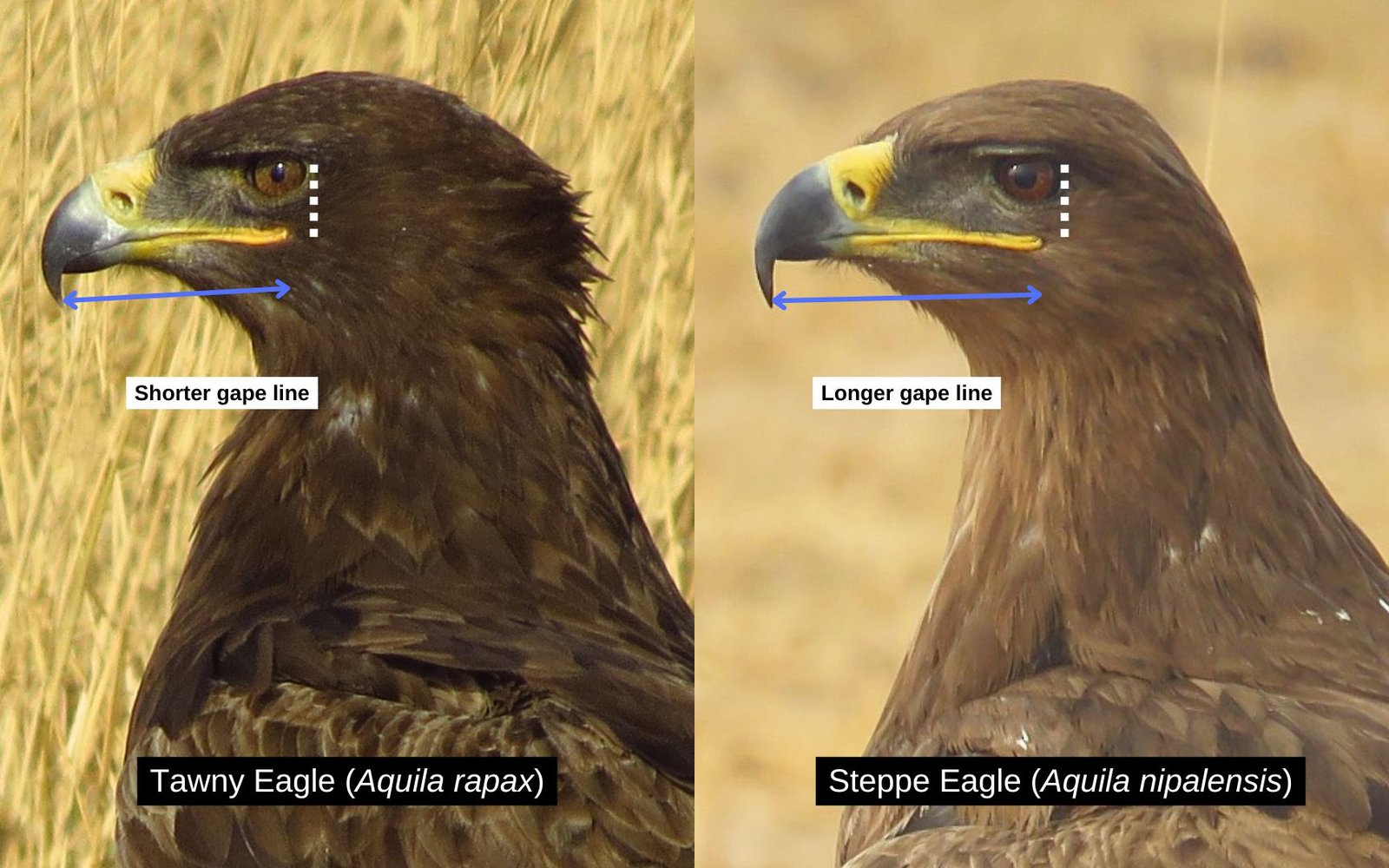
Fig. 7: Tawny vs. Steppe Eagle gape length (not reliable in isolation). Both photos by Ritvik Singh.

Fig. 8: Tawny vs. Steppe Eagle underwing comparison. Photos by Rahul Singh and Sachin Kumar Bhagat.
Imperial Eagle are distinctive. Adults have golden-brown patches on the crown and nape (Fig. 9), making them readily identifiable even in flight. Imperial Eagles also have pale, yellowish irises, which can help distinguish them from other Aquila and Clanga raptors in the region that typically have brownish irises. Juveniles can look similar to the paler morphs of Tawny Eagle. The two species can be distinguished by the presence of pale windows on the inner primaries and the heavily streaked plumage characteristic of juvenile Imperial Eagles (Fig. 10).
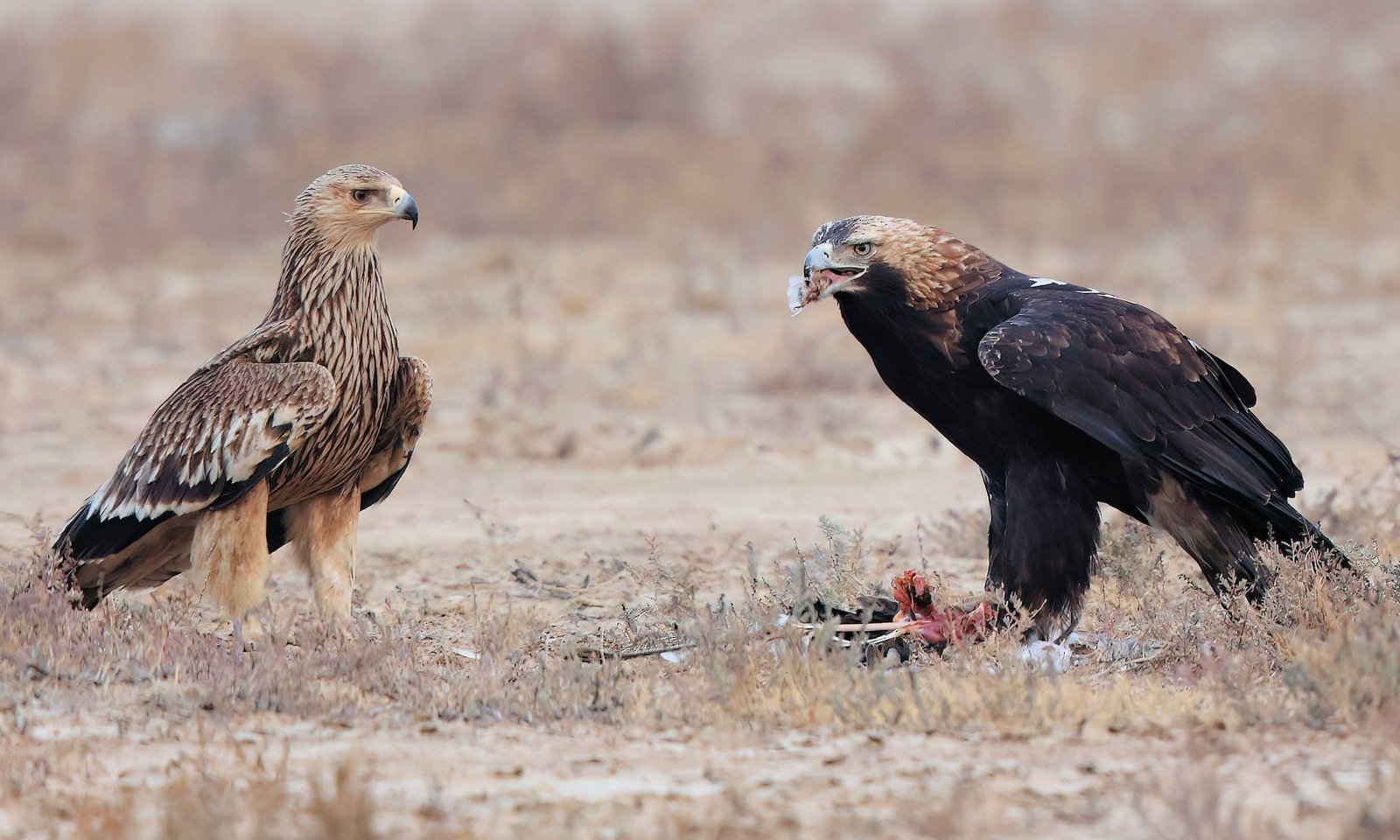
Fig. 9: Juvenile and adult Imperial Eagle. Photo by Albin Jacob.
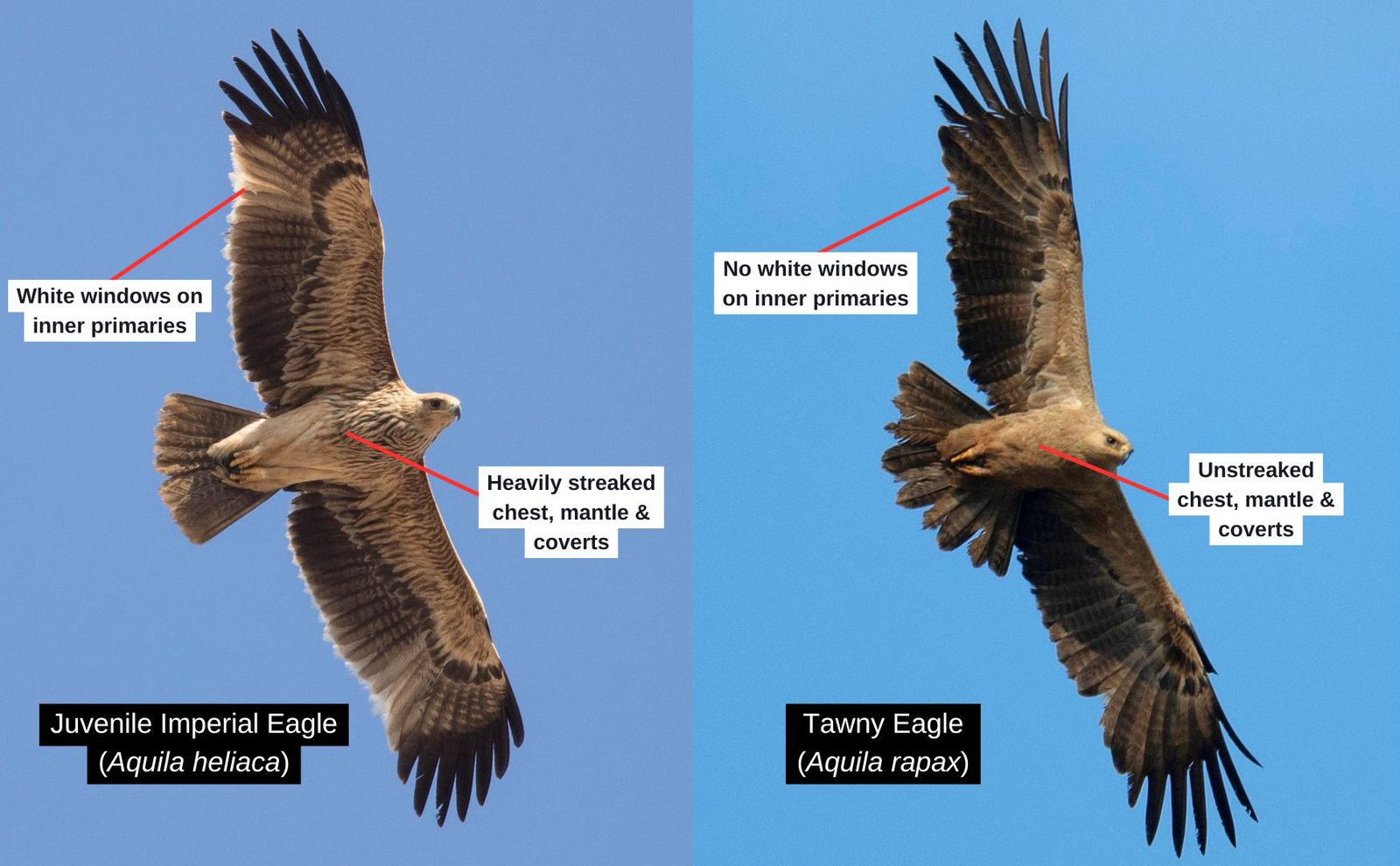
Fig. 10: Juvenile Imperial Eagle vs. pale Tawny Eagle. Photos by Andreas Boe and Michael Fuhrer.
The magic character table!
| Greater Spotted Eagle | Indian Spotted Eagle | Tawny Eagle | Steppe Eagle | Imperial Eagle | |
| Feet extension relative to tail | Beyond mid-tail | Beyond mid-tail | Short of mid-tail | Short of mid-tail | Short of mid-tail |
| Nostril shape | Circular | Circular | Ovalish | Ovalish | Ovalish |
| Gape line extension | To centre of eye | To rear of eye | To centre of eye | To rear of eye | To centre of eye |
| Tarsi feathering | Sparse | Sparse | Heavy | Heavy | Heavy |
| Barring on flight feathers | Faint or absent, fades before the trailing edge when present | Fine and extensive | Variable, usually faint or unbarred | Bold, extensive barring in adults | Faint or absent, does not extend till tips of secondaries when present |
| Pale windows on Inner primaries | Present | Present | Absent | Absent | Present in juveniles, absent in adults |
| Dark trailing edge to secondaries | Absent | Absent | Can be present in adults, but indistinct | Present in adults | Absent |
| Iris colour | Brown | Dark brown | Brown | Brown | Pale, yellowish |
The way forward
Although the article provides a comprehensive list of features that help identify Aquila and Clanga eagles, it is still only a small step into the vast and intricate world of raptor identification in all its complexity and glory. Remember that these features in isolation can be misleading. Plumages of raptors are inherently variable, which can sometimes make some characteristics challenging to discern from field observations and images. Features such as the number of emergent primaries are highly variable and can change due to moult or wing damage, while others, like gape length, nostril shape, and feet-to-tail ratios, can be difficult to accurately assess from field photographs where angles and lighting often obscure or distort key identification traits.
Despite these challenges, patience and practice, combined with a solid understanding of their typical habitats, behaviour, and distinguishing features, can improve identification skills over time. Consulting multiple resources (including books, field guides, and online communities) can provide valuable insights and broaden one’s perspective. Even then, it’s not uncommon to encounter individuals that defy conventional ID keys, reminding us that raptor identification is as much an art as it is a science.
Here are a few additional books, online forums, and resources that are especially helpful for raptor identification.
Birds of Prey of the Indian Subcontinent by Rishad Naoroji is an extensive field guide covering everything raptor-related in the region.
Raptor Identification Forum covers moults, plumages and identification keys of some raptors that occur in India.
Birds of the World is free for everybody in India, with very informative species pages not just for raptors, but all birds!
The Ask IDs of Indian Birds and Identification of Birds from the Indian Subcontinent (IBIS) Facebook forums are great places to discuss bird IDs and learn from an active community of birders from all over the world.
Happy eagle watching!
Header Image: Guess which eagle? © H Nambiar/ Macaulay Library

